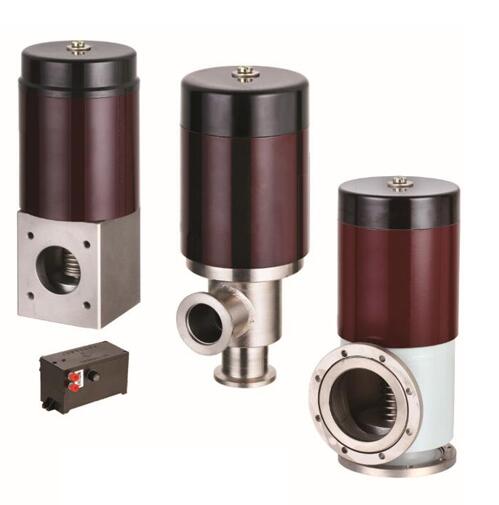Vacuum system commonly used electromagnetic valve
Solenoid valve is an industrial equipment controlled by electromagnetism. It is an automatic basic component used to control fluid. It belongs to actuator and is not limited to hydraulic and pneumatic. It is used to adjust the direction, flow, speed and other parameters of the medium in the industrial control system. Solenoid valve can cooperate with different circuits to achieve the desired control, and the control accuracy and flexibility can be guaranteed. There are many kinds of solenoid valves, different solenoid valves in the control system play a role in different positions, the most commonly used is one-way valve, safety valve, direction control valve, speed control valve and so on. 2X rotary vane vacuum pump and Roots rotary vane vacuum unit common two kinds of solenoid valve.
DDC-JQ electromagnetic vacuum belt inflatable valve is installed on the mechanical vacuum pump safety valve, installed in the mechanical vacuum pump inlet, and synchronous opening and closing with the pump. When the pump stops working or the power supply suddenly interrupts, the valve automatically closes, so that the vacuum system keeps vacuum and fills the air into the pump cavity, thereby avoiding the reverse flow of pump oil and polluting the vacuum system. DDC-JQ vacuum valves are suitable for pure air or non corrosive gases. It is divided into flange and KF shortcut interface two forms. The interface size is DN16 to DN80, which is suitable for various types of vacuum pumps and vacuum units.
DDC-JQ Series Electro-Magnetic Vacuum Gas Valve
Connection and Dimensions:
| Model | Nominal Diameter(DN) | ΦW | ΦB | H | h | bxb | n-d | Model of the matching mechanical pump |
| DDC-JQ16A | 16 | 68 | 42 | 176 | 28 | 48×48 | 4-M5 | 2XZ-0.5/1 |
| DDC-JQ25A | 25 | 82 | 55 | 199 | 35 | 58×58 | 4-M6 | 2XZ-2/4 |
| DDC-JQ32 | 32 | 92 | 64 | 226 | 40 | 68×68 | 4-M6 | 2XZ-4 |
| DDC-JQ40 | 40 | 110 | 70 | 245 | 44 | 80×80 | 4-M6 | 2XZ-8 |
| DDC-JQ50A | 50 | 125 | 90 | 290 | 56 | 95×95 | 4-M8 | 2X-15 |
| DDC-JQ65 | 65 | 135 | 105 | 320 | 65 | 115×115 | 4-M8 | 2X-30A |
| DDC-JQ80 | 80 | 165 | 125 | 367 | 75 | 140×140 | 4-M8 | 2X-70A |
The DYC-Q type electromagnetic differential pressure inflating valve is a new type of vacuum valve installed on the intake port of the mechanical vacuum pump. The working principle is that the power supply of the mechanical pump is connected with the power supply of the solenoid valve coil in the same circuit. When the mechanical vacuum pump suddenly stops power and stops operation due to its working needs, the valve uses atmospheric pressure to make the valve core automatically close, cut off the passage connected with the vacuum system, and amplify the air into the pump to prevent the mechanical pump oil from returning to the vacuum. The system plays a role in protecting the vacuum system and is conducive to the restart of the mechanical pump. The applicable working medium is air and non corrosive gas.
The leak rate of O-ring rubber seal is 10-4Pa.L/S, and the leak rate of O-ring rubber seal is 10-4Pa.L/S. The leak rate of O-ring rubber seal is 10-7Pa.L/S. Solenoid valve is composed of electromagnetic coil and magnetic core, is a valve containing one or several holes. When the coil is energized or powered off, the operation of the magnetic core will cause the fluid to pass through the valve body or be cut off to change the direction of the fluid.
The solenoid part of the solenoid valve is composed of fixed iron core, moving iron core, coil and other parts; the valve body part is composed of slide valve core, slide valve sleeve, spring base, etc. The solenoid coil is mounted directly on the valve body, and the valve body is enclosed in a sealed tube to form a compact and compact combination. The commonly used solenoid valves in our production are two position three links, two bit four links, two bits five links, etc. Let’s talk about the meaning of two: for the solenoid valve is charged and power loss, for the control of the valve is on and off. Although the solenoid valve has congenital shortcomings, the advantages are still very prominent, so it is designed into a variety of products to meet various needs, very wide range of uses. The progress of solenoid valve technology is also around how to overcome the congenital shortcomings, how to better play the inherent advantages.
(The article comes from the Internet. If reprinting is not allowed, please contact our company to delete it.)

